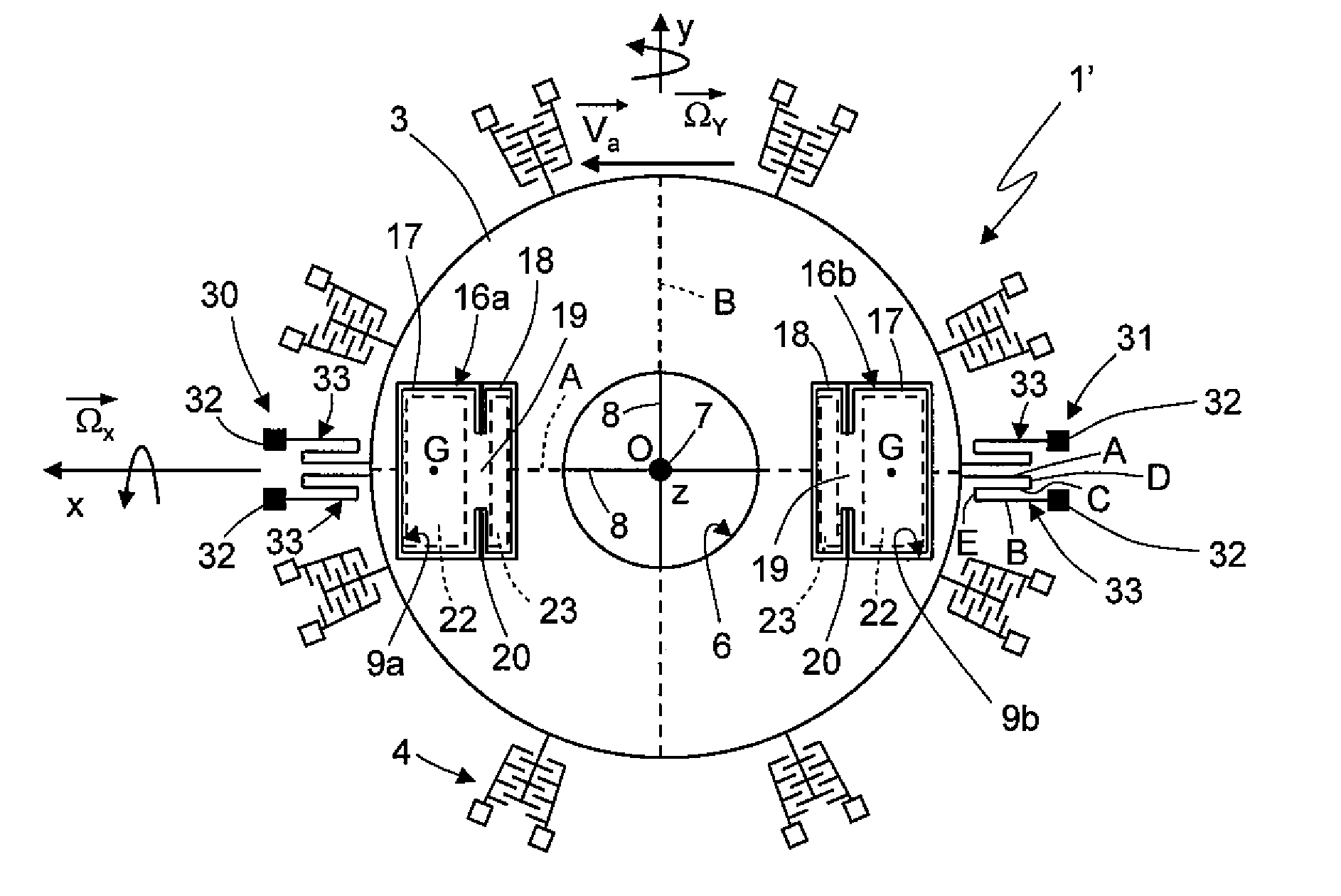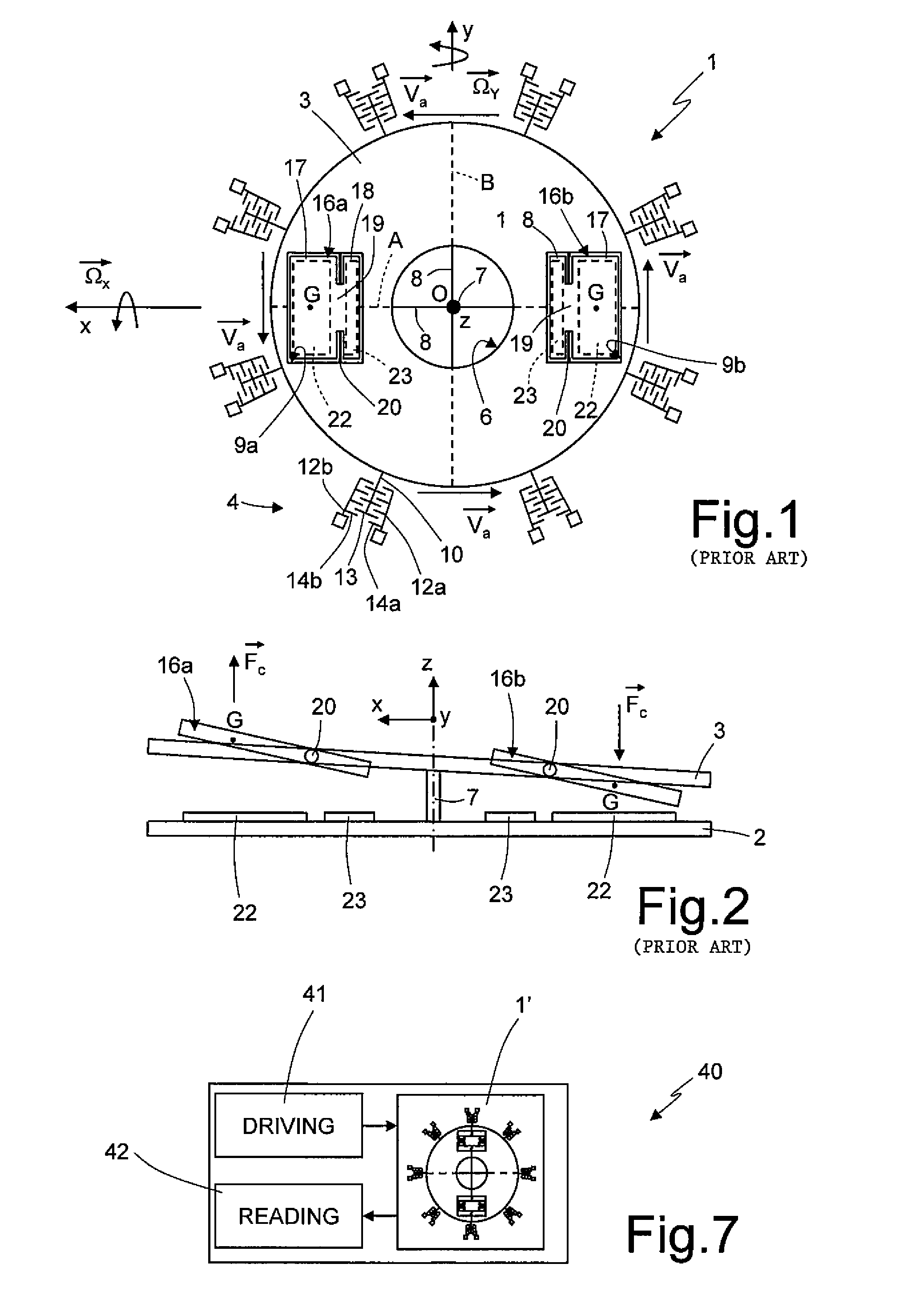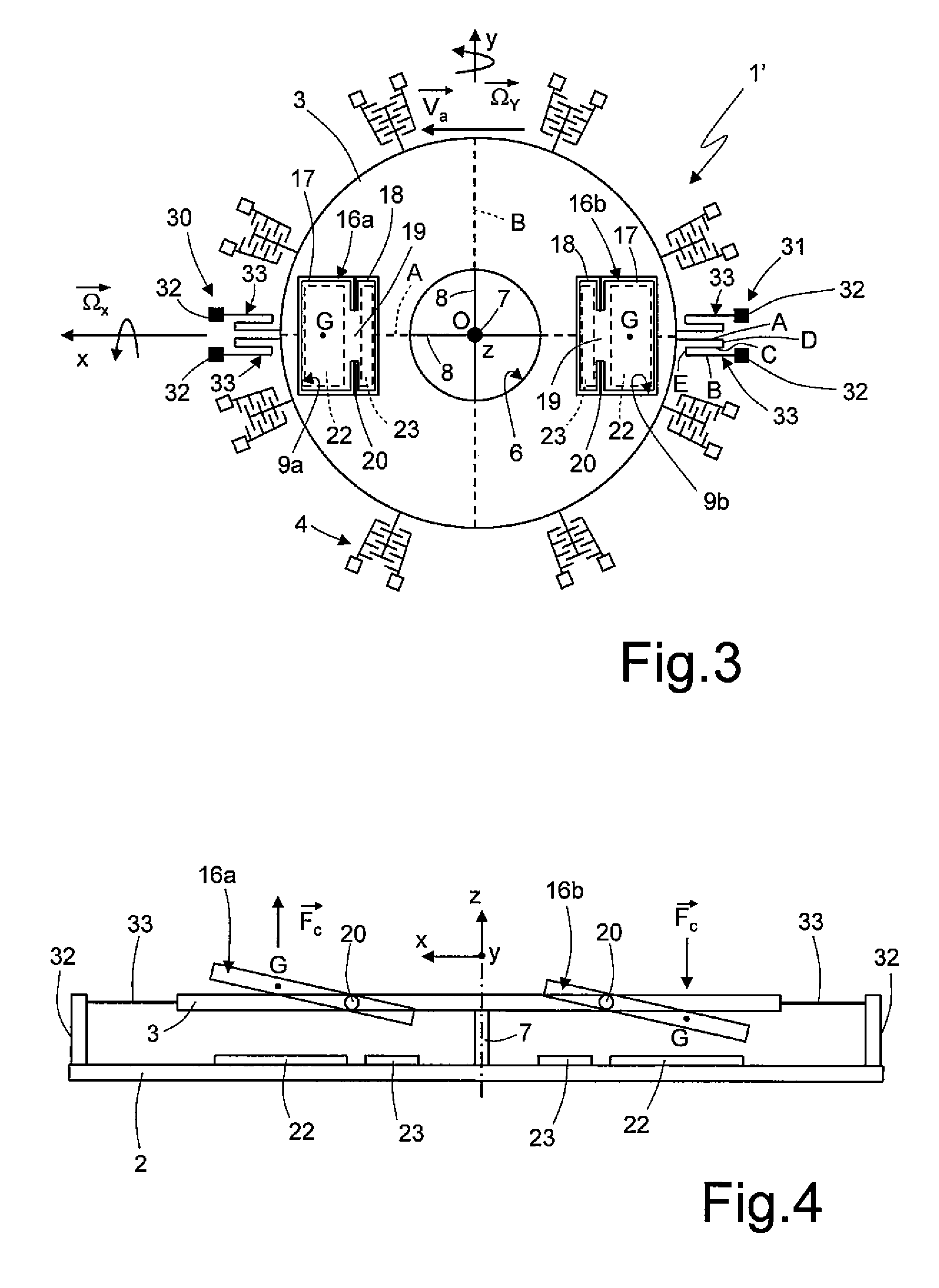Microelectromechanical sensor with improved mechanical decoupling of sensing and driving modes
a microelectromechanical sensor and driving mode technology, applied in the direction of acceleration measurement using interia force, speed measurement using gyroscopic effects, electric/magnetic means, etc., can solve the problem of improper ratio between stiffness in orthogonal direction z, impaired and lack of perfect decoupling between driving and sensing movements
- Summary
- Abstract
- Description
- Claims
- Application Information
AI Technical Summary
Benefits of technology
Problems solved by technology
Method used
Image
Examples
Embodiment Construction
[0033]One embodiment of the present invention envisages the provision of additional anchorages and elastic anchorage elements connected to the driving mass 3 in order to improve the stiffness of the same driving mass 3 for movements outside the plane of the sensor xy.
[0034]As shown in FIG. 3 wherein same reference numerals refer to same elements as those in FIG. 1, the microelectromechanical sensor, here denoted with 1′, differs from the sensor described with reference to FIG. 1 in that it further comprises a first and a second external anchorage arrangements 30, 31, coupled to the driving mass 3.
[0035]In detail, the first and second external anchorage arrangements 30, 31 are positioned externally of the driving mass 3, and are coupled to opposite sides of the same driving mass 3, with respect to the empty space 6 and center O; in the exemplary embodiment shown in FIG. 3, the first and second external anchorage arrangements 30, 31 are also aligned along the first axis x, and are dia...
PUM
 Login to View More
Login to View More Abstract
Description
Claims
Application Information
 Login to View More
Login to View More - R&D
- Intellectual Property
- Life Sciences
- Materials
- Tech Scout
- Unparalleled Data Quality
- Higher Quality Content
- 60% Fewer Hallucinations
Browse by: Latest US Patents, China's latest patents, Technical Efficacy Thesaurus, Application Domain, Technology Topic, Popular Technical Reports.
© 2025 PatSnap. All rights reserved.Legal|Privacy policy|Modern Slavery Act Transparency Statement|Sitemap|About US| Contact US: help@patsnap.com



